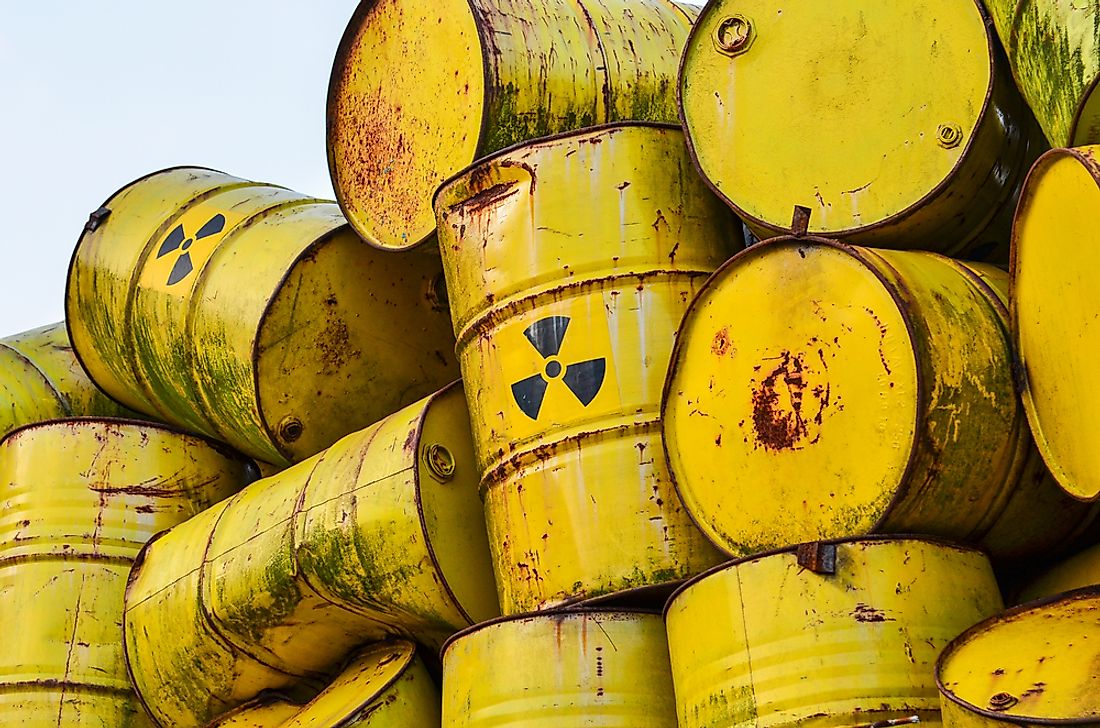What is Radioactive Waste?

Any waste that contains radioactive materials is radioactive waste. They are by-products from a nuclear power generation, nuclear technology, or nuclear fission and they are hazardous to all living organisms and the environment. The changes that occur in the nuclear reactor make the radioactive waste the most deadly waste compared to any other energy source. From its external appearance, radioactive waste looks the same as the nuclear fuel that was loaded into the reactor. However, after the nuclear reactions, the critical components of the radioactive waste are smaller atoms termed as fission products. These fission products encompass harmful radioactive isotopes with diverse elements such as alkali metals, halogens, and even noble free gases. These elements in the waste are what make it dangerously radioactive remaining in that state for thousands of years. Any exposure to the radioactive waste by any living organism leads to death caused by acute radiation sickness.
Composition
The general composition of the radioactive waste has been deemed harmful to all living things on the planet and the environment. The waste has a significant number of radionuclides which are atoms with excess nuclear energy that makes them unstable, and during the process of radioactive decay they emit ionizing radiations which are extremely dangerous. These radionuclide isotopes emit various types of radiations at different levels that last for different periods of time and as such make them difficult for the scientist to find the perfect disposal place. One such radioactive element from the waste is plutonium-239 which remains to be highly dangerous to all humans and living things for thousands of years.
Sources of Radioactive Waste
There are different sources of radioactive waste. In nations with diverse nuclear power plants and nuclear fuel treatments centers, a high volume of the radioactive waste will be emitted from the nuclear fuel cycle and the nuclear weapons processing. There are other significant sources of this waste other than the nuclear processing plants such as industrial and medical wastes found all over the world. The processing of coal, gas, and oil emits compounds that when concentrated, lead to NORM (Naturally Occurring Radioactive Materials) which are widely recognized as a source of radioactive waste.
Classification
The classification of radioactive waste has been categorized depending on the nations. Mill tailing is one of the classifications of the radioactive waste and normally contains some trace amounts of uranium and other compounds such as radium and thorium. The uranium mill tailings are the waste compounds left from the ore containing uranium processing plants. Scientifically, they have been deemed not to be highly radioactive in nature. The LLW (low-level waste) is a classification of the radioactive waste derived from the hospital and industry wastes. Added to this category are papers, clothing, and other items that contain extremely low amounts of radioactivity that has a short lifespan. Other high activity low-level waste will need proper handling and proper shielding during transportation for safety purposes.
Prevention
Radioactive waste has over 90% of uranium which is 90% of unused fuel. Recycling this waste will lead to the generation of new energy hence reducing the amount of waste on the planet. This can occur when the nuclear waste is chemically processed in a closed fuel cycle to prevent the emission of more waste and increase the extraction of clean energy.











